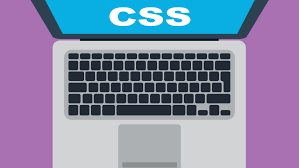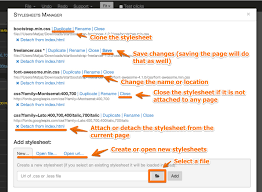
CSS How To…
When a browser reads a style sheet, it will format the HTML document according to the information in the style sheet.

Three Ways to Insert CSS
There are three ways of inserting a style sheet:
- External style sheet
- Internal style sheet
- Inline style
External Style Sheet
With an external style sheet, you can change the look of an entire website by changing just one file!
Each page must include a reference to the external style sheet file inside the <link> element. The <link> element goes inside the <head> section:
Example
<head> <link rel="stylesheet" type="text/css" href="mystyle.css"> </head> Try it Yourself »
An external style sheet can be written in any text editor. The file should not contain any html tags. The style sheet file must be saved with a .css extension.
Here is how the “mystyle.css” looks:
body {
background-color: lightblue;
}
h1 {
color: navy;
margin-left: 20px;
}
Note: Do not add a space between the property value and the unit (such as margin-left: 20 px;). The correct way is: margin-left: 20px;
Internal Style Sheet
An internal style sheet may be used if one single page has a unique style.
Internal styles are defined within the <style> element, inside the <head> section of an HTML page:
Example
<head>
<style>
body {
background-color: linen;
}
h1 {
color: maroon;
margin-left: 40px;
}
</style>
</head>
Try it Yourself »
Inline Styles
An inline style may be used to apply a unique style for a single element.
To use inline styles, add the style attribute to the relevant element. The style attribute can contain any CSS property.
The example below shows how to change the color and the left margin of a <h1> element:
Example
<h1 style="color:blue;margin-left:30px;">This is a heading</h1> Try it Yourself »
Tip: An inline style loses many of the advantages of a style sheet (by mixing content with presentation). Use this method sparingly.
Multiple Style Sheets
If some properties have been defined for the same selector (element) in different style sheets, the value from the last read style sheet will be used.
Example
Assume that an external style sheet has the following style for the <h1> element:h1 {
color: navy;
}
then, assume that an internal style sheet also has the following style for the <h1> element:h1 {
color: orange;
}
If the internal style is defined after the link to the external style sheet, the <h1> elements will be “orange”:
Example
<head>
<link rel="stylesheet" type="text/css" href="mystyle.css">
<style>
h1 {
color: orange;
}
</style>
</head>
Try it Yourself »
However, if the internal style is defined before the link to the external style sheet, the <h1> elements will be “navy”:
Example
<head>
<style>
h1 {
color: orange;
}
</style>
<link rel="stylesheet" type="text/css" href="mystyle.css">
</head>
Try it Yourself »
Cascading Order
What style will be used when there is more than one style specified for an HTML element?
All the styles in a page will “cascade” into a new “virtual” style sheet by the following rules, where number one has the highest priority:
- Inline style (inside an HTML element)
- External and internal style sheets (in the head section)
- Browser default
So, an inline style has the highest priority, and will override external and internal styles and browser defaults.
Source: This is an excerpt directly from an excellent website to learn code called WSSchools.com. This page is located at https://www.w3schools.com/css/css_howto.asp






























